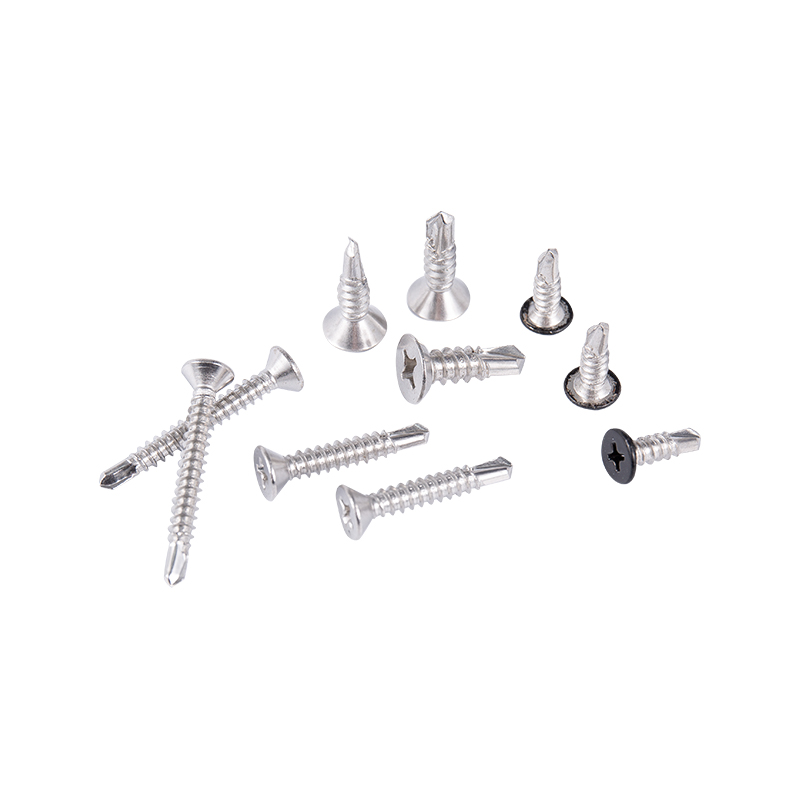Pan Head Self-Drilling Screws
Cat:Self Drilling Screws
Pan Head Self-Drilling Screws are a type of fastener widely used in construction...
See DetailsIn the fast-paced world of construction, manufacturing, and design, efficiency is everything. Professionals and DIYers alike are constantly searching for tools and materials that save time, reduce costs, and improve outcomes. One such innovation that quietly underpins countless successful projects is the countersunk head self-drilling screw. But what makes this fastener so special? Why are these small components critical in both large-scale construction and detailed assembly tasks?
Countersunk head self-drilling screws represent a leap forward in fastening technology. They combine drilling, tapping, and fastening in a single, seamless operation. The result is faster installation, greater precision, and a cleaner finish. These screws are widely adopted in industries like construction, furniture design, automotive engineering, and even DIY home improvements.
Their versatility, strength, and efficiency have led them to become a staple in both professional and personal toolkits. Let’s explore in depth what these screws are, why they matter, and how to use them effectively for optimal performance.
A countersunk head self-drilling screw is a mechanical fastener that integrates a sharp drill point at its tip and threading along the shank. Unlike standard screws, which require a separate drilling step to create a pilot hole, these screws bore their own holes and simultaneously tap threads as they are driven in. The key feature is the countersunk head, which is conically shaped to sit flush or slightly below the surface of the material, creating a smooth, professional finish.
This built-in functionality makes them indispensable in applications where appearance, safety, and installation speed are important.
These screws are not just another tool; they are a productivity booster. The main advantages include:

The countersunk design serves both aesthetic and functional purposes. A flush finish is crucial in furniture, flooring, and construction, where protruding heads can be hazardous or unsightly. The conical shape of the head ensures it seats securely into the material, creating a smooth surface that blends seamlessly into the surrounding area.
This design is especially important in environments where surfaces must be level, such as in interior trim, cabinetry, and flooring.
The diversity of countersunk head self-drilling screws ensures that there’s a perfect fit for nearly every application. Variations in material, head design, and intended use allow users to choose precisely what’s needed for the task at hand.
Material choice affects strength, corrosion resistance, and cost. Here are the most common materials used:
| Material | Corrosion Resistance | Strength | Best Use Cases |
|---|---|---|---|
| Stainless Steel (SUS410/304/316) | Excellent | Moderate to High | Outdoor, marine, corrosive environments |
| Carbon Steel (C1022A) | Low (unless coated) | High | Interior framing, non-corrosive environments |
| Zinc-Coated Carbon Steel | Moderate | High | Indoor/outdoor use with moderate exposure to moisture |
Stainless Steel varieties like SUS316 are superior for environments with high moisture, including coastal areas. Carbon Steel, while cost-effective, performs best in dry, interior conditions unless paired with coatings such as zinc plating, black oxide, or epoxy to enhance durability.
The head style affects how the screw sits and what kind of surface finish is achievable.
Screws are also optimized for the materials they are used with:
Understanding the anatomy of a countersunk head self-drilling screw reveals why it performs so well in high-demand scenarios.
The self-drilling tip eliminates the need for pre-drilling. The drill point is rated from #1 to #5, with higher numbers suited for thicker materials. A #5 point, for example, can drill through 12-gauge steel.
The shank provides stability, while the threads engage the material. Thread pitch varies:
The head is conically shaped to embed into the material, producing a smooth finish. This design is especially useful when multiple layers or precise alignment is required.
Their broad usage spans multiple sectors. Below are the most common applications:
Used extensively in:
Their flush finish and drilling efficiency make them perfect for securing materials with minimal surface disruption.
Ideal when combining wood with metal, such as:
Invaluable in:
Perfect for home repair tasks like:
Their versatility and simplicity make them a go-to option for amateurs and professionals alike.
Selecting the appropriate countersunk head self-drilling screw ensures performance and durability. Several criteria must be considered.
Match screw material to the environment:
| Environment | Recommended Screw Material |
|---|---|
| Outdoor exposure | SUS304, SUS316 |
| Marine/saline environments | SUS316 |
| Indoor dry environments | Carbon steel with coatings |
| High humidity indoor areas | Zinc-coated or SUS410 |
Size ranges typically include ST3.5 to ST6.3 (or 6# to 1/4") diameters. Length should be chosen based on:
Choose head type based on application:
Choose based on material thickness:
While these screws simplify installation, optimal results depend on proper technique.
Use:
Avoid stripping by using appropriate torque and maintaining pressure.
Despite their ease of use, certain challenges may arise.
Causes:
Solution:
Causes:
Solution:
Occurs when threads engage before hole is fully drilled. Prevent by using longer drill point screws for thicker materials.
Countersunk head self-drilling screws are more than just fasteners. They’re precision-engineered components that streamline work, enhance durability, and improve aesthetics. Whether you’re securing steel beams, attaching metal to wood, or refining fine furniture, these screws offer a smart, reliable solution.
By understanding their material composition, design variations, and best-use practices, professionals and DIYers alike can maximize their effectiveness. From selecting the right size to avoiding common installation errors, using these screws properly can significantly improve the quality and longevity of your project.
So next time you reach into your toolbox, don’t underestimate the power of a well-chosen countersunk head self-drilling screw — it might just be the most efficient tool you never thought to appreciate.